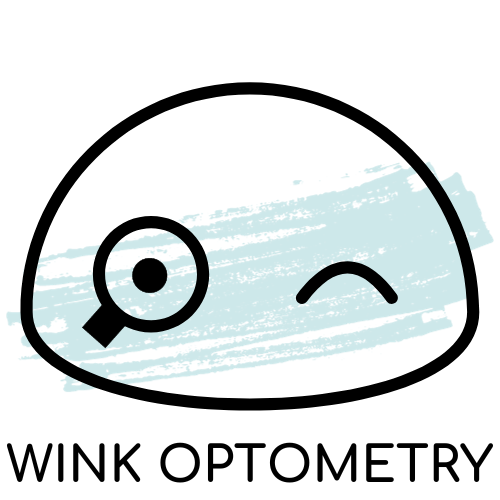Needless to say, some of us go through this with ease and others it’s definitely a process. I’ve been wearing glasses since I was 6 years old. Every year I would get a new pair because my prescription kept on increasing and with each prescription change, came prescription adaptation. I’ve become rather used to it now and thankfully my prescription has stabilized, but I find this process can be quite hard on some people. No matter how much I try to warn my patients and go through what to expect with their new glasses, it never fails – there will always be certain people who can’t – or refuse to – adapt.
The reason we need to adapt to our new prescription is because there is a disconnect between what the brain is used to seeing and what the eyes are currently seeing. Depending on the disparity between the two, will determine how long and how difficult it will be for the person adapting. Everyone is different so adaptation times will vary. It could take a couple hours to a couple of weeks.
Here are some tips and tricks to hopefully make the adaptation process easier for you:
- I cannot stress this enough. Wear the glasses as much as possible. If you don’t wear them, you’ll never get used to them – simple. By wearing the glasses full time, you’ll allow your brain to get used to the new prescription as the “new norm”. If you’re really on and off with the glasses, your brain will never have enough exposure to the new prescription to get used to it.
- Take it slow. You don’t have to force this on yourself in a day – especially if it’s been a while since you’ve worn glasses. Take it a day at a time. Start with a couple of hours and then continually add 1-2 hours to that start point each day until you’re able to wear the glasses full time.
 Don’t switch back and forth between old glasses and new glasses. This is one of the worst things you can do to yourself while adapting. If you give the brain what it’s used to, it will always prefer that over something new and different. Similarly when you’re working out or learning new things, it’s tough in the beginning but if you don’t challenge yourself or change things up, you’ll never progress. It’s better to just take the glasses off and go without (if possible) or switch to contacts for the time being. Contact lens prescriptions will always be easier to adapt to than glasses.
Don’t switch back and forth between old glasses and new glasses. This is one of the worst things you can do to yourself while adapting. If you give the brain what it’s used to, it will always prefer that over something new and different. Similarly when you’re working out or learning new things, it’s tough in the beginning but if you don’t challenge yourself or change things up, you’ll never progress. It’s better to just take the glasses off and go without (if possible) or switch to contacts for the time being. Contact lens prescriptions will always be easier to adapt to than glasses.
- Expect headaches. It doesn’t happen to everyone but it can happen so be ready for them. If possible, try to push through them with the glasses on. If not, it’s fine to take the glasses off, but try to go back to them as soon as possible.
- Things might look funny. Depending on how your prescription changed, things might look slightly curved or slanted. This is perfectly normal to experience. Once you’ve adapted to the prescription, this should go away – if not then let your eye care professional know that things are clear but slanted. This is a lens issue and can be fixed by either changing the base curve or using aspheric lenses.
- Your depth perception might be off. Things look different and thus your depth perception will be affected. Again, once you’ve adapted this should return to normal.
- If the above symptoms don’t improve the more you wear the glasses, go back to see your eye doctor. There might be an adjustment issue, lens issue, or prescription issue.
Hopefully this will help those of you who recently got new glasses or help you better understand the process. It’s pretty much just teaching your brain to see what your eyes are seeing. Due to the disconnect, your brain is telling you that this is new – not bad – but just new. The same goes for adapting to new types of lenses as well – whether they be progressives, therapeutic lenses, computer lenses, or bifocals/trifocals, the brain just needs to learn how to see through them. As eye care providers, our goal is to ensure you’re seeing your best. If you feel like it might be too much change, we can always prescribe a slightly lower prescription (it won’t be as clear) to make the adaptation process easier. I always give my patients this choice when prescribing glasses. The lower prescription is easier to adapt to but the vision is slightly compromised versus prescribing what they should be at and possibly experiencing a longer adaptation process.

